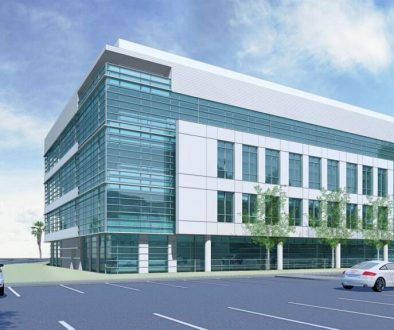Avoiding Common Pitfalls in Commercial Real Estate Leases
Understand the key pitfalls in commercial real estate leases and how to avoid them to ensure a successful leasing experience.
Avoiding Common Pitfalls in Commercial Real Estate Leases
Commercial real estate leasing is a complex process that involves various legal, financial, and logistical considerations. Understanding the common pitfalls associated with commercial leases is crucial for both landlords and tenants to avoid costly mistakes. This blog post will delve into the most frequent issues encountered in commercial leases, offering insights on how to navigate these potential traps. By the end, readers will be equipped with the knowledge to make informed decisions and secure favorable lease terms.
Introduction
In the world of commercial real estate, leases are fundamental agreements that define the relationship between landlords and tenants. However, many individuals and businesses may overlook critical details while negotiating these agreements, leading to misunderstandings and disputes down the line. Whether you’re a seasoned investor or a first-time renter, avoiding common pitfalls in commercial real estate leases can save you time, money, and stress. This article will explore important aspects of commercial leases, highlighting key areas where caution is needed.
Understanding Lease Types
- Full-Service Lease: This type of lease includes all operating expenses such as utilities, maintenance, and property taxes within the rental rate. While it offers simplicity for tenants, it often comes with higher base rents.
- Net Lease: In a net lease, tenants are responsible for a portion of the property’s operating expenses, which can include property taxes, insurance, and maintenance. This can be financially beneficial, but it requires careful calculation to avoid unexpected costs.
- Modified Gross Lease: This lease blends features of both gross and net leases. Tenants pay a base rent plus a share of operating expenses. Clarity in agreements is key to avoiding confusion.
Understanding the differences between these lease types is essential. For example, a full-service lease may seem expensive at first glance, but if it includes all operating costs, it could be a better deal than a net lease that appears cheaper but leads to significant additional expenses. Be sure to evaluate your business’s specific needs and financial position when considering lease types.
Common Lease Provisions to Watch Out For
Several provisions in commercial leases require extra scrutiny. Here are some common pitfalls:
- Rent Escalation Clauses: These clauses allow landlords to increase rent at specified intervals. Tenants should negotiate caps on these increases to prevent unaffordable hikes.
- Termination Clauses: Understanding the conditions under which a lease can be terminated is vital. Unfavorable terms can lead to costly early exit penalties.
- Repair and Maintenance Responsibilities: Many leases outline who is responsible for repairs and maintenance. Tenants should seek clarity on what is expected to avoid unexpected costs.
- Use Clauses: These clauses specify what activities can take place on the premises. Tenants should ensure their business activities align with these restrictions to avoid breaches of contract.
Carefully reviewing these provisions can prevent misunderstandings and potential disputes. For instance, if a tenant does not realize that they are responsible for all repairs, they might face significant unexpected expenses. Always seek legal advice to understand these provisions fully.
The Importance of Due Diligence
Before signing a lease, conducting thorough due diligence is critical. This includes:
- Property Condition: Inspect the premises to identify any potential issues that could affect your business operations.
- Market Analysis: Understand the local real estate market to ensure the lease terms are competitive.
- Financial Review: Analyze the landlord’s financial stability. If the property is under financial distress, it could affect your lease.
Skipping due diligence can lead to unforeseen complications. For example, a tenant may discover after signing a lease that the building has significant structural issues requiring extensive repairs, which they are responsible for under the lease agreement. A thorough investigation can identify such problems before it’s too late.
Negotiation Tips for Tenants
Effective negotiation can help tenants secure favorable lease terms. Here are some tips:
- Know Your Market: Research comparable properties to strengthen your negotiating position. Having data can help you argue for better terms.
- Be Prepared to Walk Away: If the terms are not acceptable, be willing to walk away. This can put pressure on the landlord to offer better terms.
- Engage a Real Estate Attorney: Legal expertise can provide insights into complex lease language and help negotiate favorable terms.
For example, if a tenant is aware of lower rental rates in the market, they can use this information to negotiate a more competitive rate. Engaging a real estate attorney can also provide additional leverage during negotiations, ensuring that all legal aspects are covered.
Understanding Exit Strategies
Having a clear exit strategy is essential for any commercial lease. This involves:
- Renewal Options: Ensure you have the option to renew the lease at predetermined terms.
- Subleasing Rights: Understand if and how you can sublease your space. This can be crucial if your business needs change.
- Exit Clauses: Negotiate terms that allow you to exit the lease early without excessive penalties.
Without a well-defined exit strategy, a tenant may find themselves stuck in a lease that no longer fits their business needs. For example, if a tenant’s business grows and they need a larger space, having the option to sublease can provide flexibility.
Best Practices for Commercial Leasing
To navigate commercial leases more effectively, consider these best practices:
- Engage Professionals Early: Involve real estate brokers and attorneys during the planning stage to guide you through the leasing process.
- Keep Communication Open: Maintain clear communication with the landlord throughout the lease term to address any issues promptly.
- Document Everything: Ensure all agreements and modifications are documented in writing to avoid potential disputes.
By adhering to these practices, tenants can ensure a smoother leasing experience. Documenting all agreements, for instance, can protect both landlords and tenants in case of misunderstandings or disputes.
Emerging Trends in Commercial Leasing
The commercial real estate landscape is constantly evolving. Some emerging trends include:
- Flexible Lease Terms: Many landlords are now offering flexible lease terms to accommodate changing business needs.
- Co-working Spaces: The rise of co-working environments is changing traditional leasing models, allowing businesses to scale up or down easily.
- Environmentally Friendly Practices: Sustainability is becoming more important, and properties that incorporate green practices may command higher rental rates.
Staying informed about these trends can help tenants make strategic decisions regarding their leasing options. For example, businesses seeking flexibility might benefit from co-working spaces, while those focused on sustainability should prioritize properties with green certifications.
Conclusion
Avoiding common pitfalls in commercial real estate leases requires diligence, negotiation, and a thorough understanding of the lease terms. As the commercial leasing landscape continues to evolve, being informed and proactive can lead to successful leasing experiences. Remember, taking the time to understand your lease and seeking professional advice can safeguard your business from costly mistakes. As you embark on your leasing journey, keep these insights in mind to ensure you make informed decisions.



